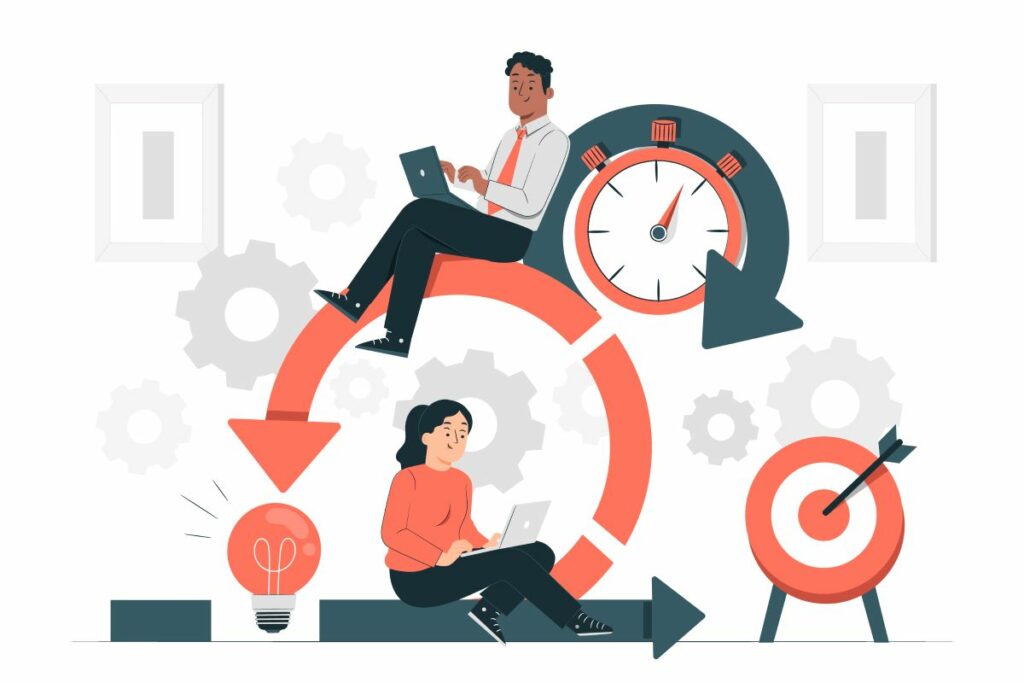Table of Contents
ToggleA. When there is flow it means there are small batch sizes
B. Large batch sizes ensure time for built-in quality
C. When stories are broken into tasks it means there are small batch sizes
D. Large batch sizes limit the ability to preserve options
The Correct Answer is
D. Large batch sizes limit the ability to preserve options
Explanations
This concept is rooted in Lean and Agile principles, which emphasize the value of flexibility and adaptability in the development process. Large batch sizes tend to lock in decisions and resources early, which can reduce the ability to respond to changes or new information. In contrast, smaller batch sizes allow for more frequent reassessment and adaptation, preserving the ability to make choices based on the most current and relevant information. This flexibility is crucial for managing uncertainty and maximizing value delivery in complex environments.
Understanding the impact of batch size on workflow, efficiency, and adaptability requires a deeper dive into Lean and Agile principles. Batch size refers to the amount of work (e.g., features, user stories, tasks) processed before moving on to the next stage of development or delivery. The size of these batches can significantly affect an organization’s ability to deliver value efficiently and respond to changes effectively. Let’s explore the nuanced implications of batch size in more detail.
Large Batch Sizes
- Reduced Flexibility: Large batches typically mean work is planned, developed, and delivered in big chunks. This approach can significantly reduce the project’s flexibility because changes become more difficult and costly to implement once a large amount of work is underway or completed.
- Increased Risk: With larger batches, the risk of delivering something that doesn’t meet customer needs or market demands increases. This is because feedback cycles are longer, and there’s a higher chance that assumptions made at the start of the batch are no longer valid by the end.
- Resource Inefficiency: Large batches often require more resources upfront and can lead to inefficiencies. Work-in-progress (WIP) can clog the system, leading to longer lead times and increased holding costs (the cost of the investment in WIP).
- Limitation on Preserving Options: By committing to large amounts of work upfront, organizations effectively close off alternative paths and options that might have been more valuable or efficient. This can lead to missed opportunities and suboptimal outcomes.
Small Batch Sizes
- Enhanced Adaptability: Small batches allow for quicker feedback loops with stakeholders and users. This means that learning from each small batch can be immediately incorporated into the next, allowing for continuous adaptation to changing needs and conditions.
- Reduced Risk: Smaller batches reduce the risk associated with any single batch. If a problem is discovered, less work needs to be scrapped or revised. This makes it easier and less costly to pivot or make adjustments based on feedback or new information.
- Improved Flow and Efficiency: Small batches tend to move more smoothly through the development process, reducing bottlenecks and delays. This can lead to a more consistent and predictable flow of value delivery, as well as shorter cycle times from concept to delivery.
- Preservation of Options: Working in small batches allows an organization to defer commitments and keep options open for as long as possible. This flexibility means that decisions can be made based on the latest and most complete information available, often leading to better outcomes.
Implementing Small Batch Sizes
Implementing small batch sizes involves techniques like breaking down user stories into smaller, independently deliverable pieces, employing continuous integration and continuous delivery (CI/CD) practices, and fostering a culture that values learning and adaptability. It requires a shift in mindset from traditional project management approaches that favor large, comprehensive planning and execution cycles to a more dynamic, iterative approach that values responsiveness and efficiency.
In conclusion, the understanding and strategic manipulation of batch size is a critical component of Lean and Agile methodologies. Smaller batch sizes align with the principles of quick feedback, reduced risk, increased efficiency, and the preservation of options, making them a cornerstone of Agile and Lean practices in the pursuit of operational excellence and business agility.
Other Leading SAFe 6.0 Question – What is an example of applying cadence and synchronization in SAFe?

© 2022 spoclearn.com